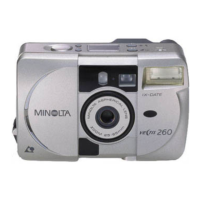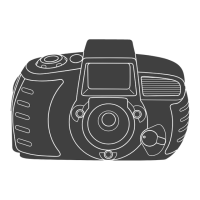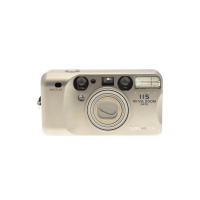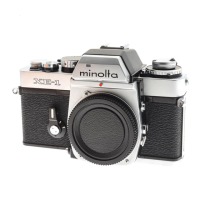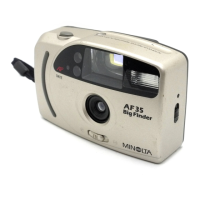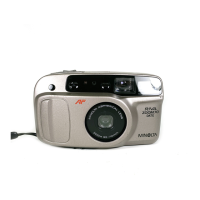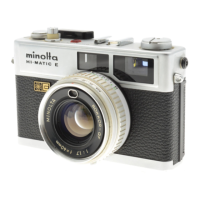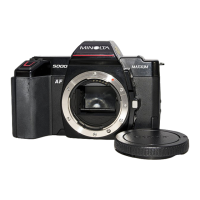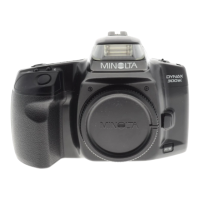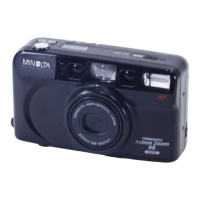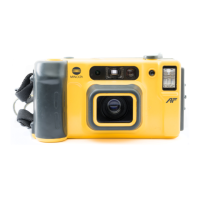
Do you have a question about the Minolta VECTIS WEATHERMATIC ZOOM and is the answer not in the manual?
| Brand | Minolta |
|---|---|
| Model | VECTIS WEATHERMATIC ZOOM |
| Category | Film Camera |
| Language | English |
Details on classic C, wider H, and panorama P print formats available.
Explains the IX240 film's drop-in loading and status indicators.
Information on film return with index prints and ordering reprints.
Cautions regarding battery installation, heat, and proper use to prevent explosion.
Warnings for safe operation, especially around young children, and medical advice if swallowed.
Camera is water resistant up to 10m (33 ft.) in rain, snow, or underwater.
Prohibits jumping, surfing, or throwing the camera while submerged or in water.
Operating range -10 to 40°C; temperature impacts data panel response.
Avoid placing film cassettes near magnetic fields like TVs or speakers.
Procedure for resolving camera malfunctions, including battery reset and service contact.
Diagram and labels for external parts like zoom lever, shutter button, and viewfinder.
Explanation of the data panel indicators and viewfinder elements like focus frame.
Instructions for cleaning the camera and chamber before battery insertion.
Process for opening, inserting the correct battery, and closing the chamber securely.
Details on using IX240 film, automatic loading, and double exposure prevention.
Explanation of VEI indicators (Unexposed, Partially Exposed, Exposed, Processed).
How to set the control dial to AUTO for automatic flash and exposure.
Choosing desired print formats (C, H, P) affecting viewfinder display.
Techniques for framing subjects in the viewfinder and achieving focus.
When the ready lamp glows, press the shutter button fully to capture the image.
Guidance for underwater use, depth limits, and image quality considerations.
Focus range for close subjects and using viewfinder guides for framing.
Tips for focusing on subjects in very bright or low-contrast areas.
How the camera focuses on subjects that overlap in the frame.
Handling subjects composed of alternating light and dark lines.
Steps to lock focus on a subject, recompose, and take the picture.
Effective flash range based on film speed (ISO) and lens focal length.
Meaning of ready lamp signals for flash charge status and focus confirmation.
Activating pre-flash to minimize red-eye in portraits.
Forcing flash to fire to illuminate subjects or reduce shadows.
Disabling the flash to capture ambient light or twilight scenes.
Balancing flash and existing light for better night and sunset portraits.
Steps for the camera's auto rewind and safely removing the film cassette.
Choosing to imprint date/time on prints or have it recorded in data.
Step-by-step guide to accurately setting the year, month, day, hour, and minute.
How to switch between YMD, MDY, and DMY date formats.
Instructions for setting up and using the ten-second self-timer for delayed shots.
Procedures for cleaning exterior surfaces, lens glass, and chamber seals.
Recommendations for storing the camera to ensure its longevity and proper function.
Information on choosing certified photolabs for best print quality and services.
Detailed technical data for camera type, lens, focusing, exposure, and battery.
Details on FCC, Canadian, and EU compliance markings and standards.
